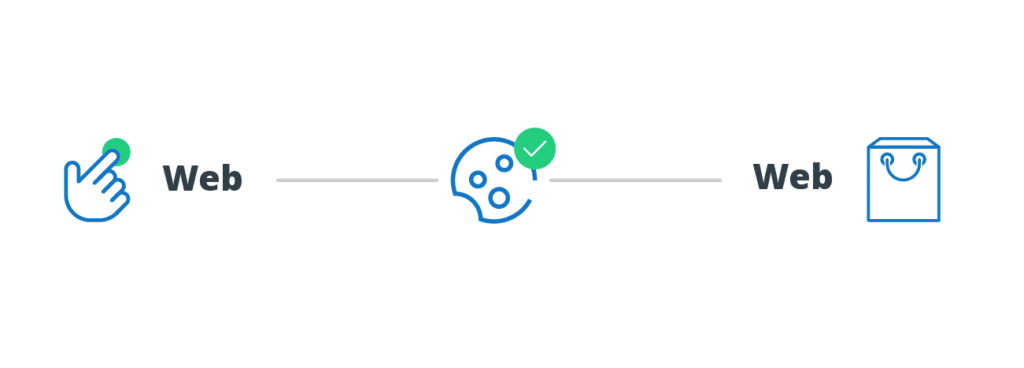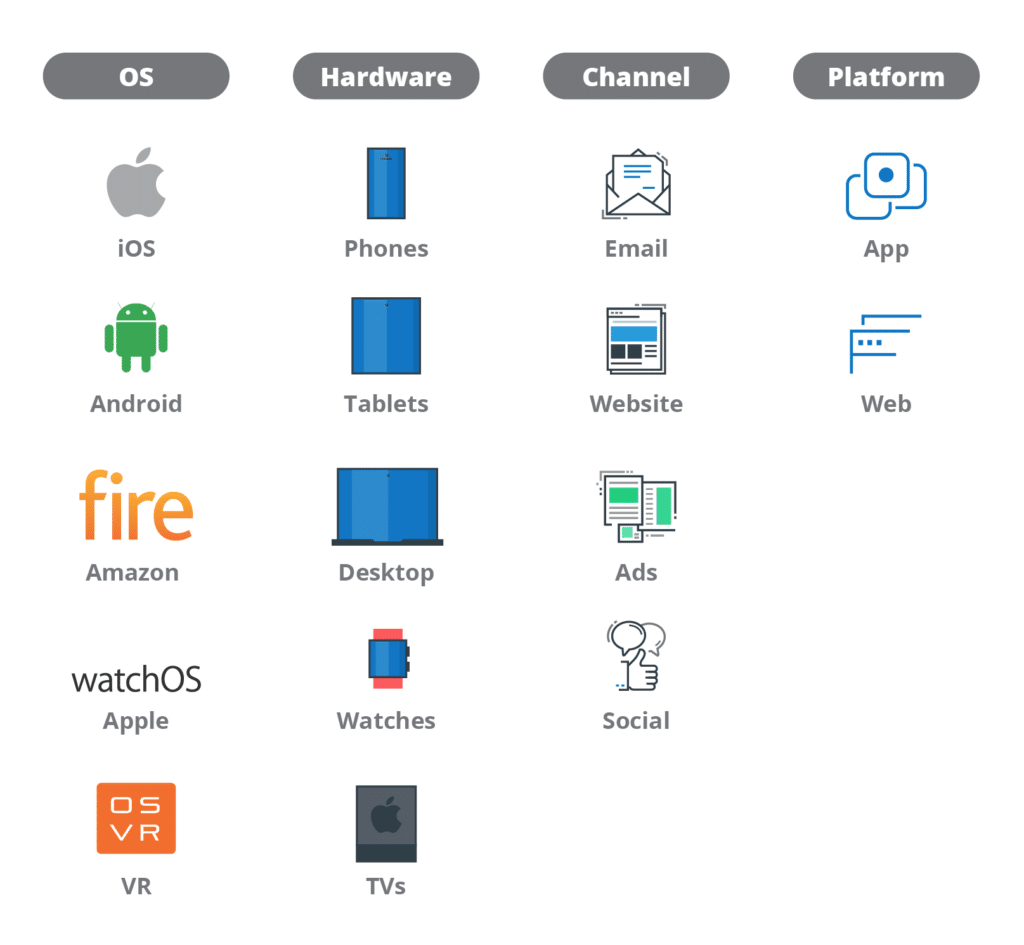This blog post was originally published in 2018. You can also read about how to optimize your cross-platform deep linking and attribution to maximize ROI in our 2019 playbook.
This is an excerpt from our brand new white paper, the Ultimate Guide to Web and App User Attribution. Click here to download the full version.
The introduction of smartphones has drastically altered the way digital consumers interact with businesses. Before the mobile domination, desktop web provided a reliable platform for brands to engage with and convert consumers through websites. Technologies developed during this time period also provided reliable solutions for digital marketers to measure and attribute digital campaigns relatively effectively.
The introduction of mobile as a digital channel and platform has fundamentally disrupted that equilibrium. Instead of the sole reliance on the web, consumers have quickly adapted to the new norm with smartphones. As the Pew Research Center reported in 2017, more than 75% of U.S. adults reportedly own at least one smartphone (a sharp and telling increase from the 35% reported in 2011), and a startling half of young adults in the U.S. report living in a household with three or more smartphones in use. Furthermore, Forrester reports that U.S. consumers spend over 90 hours on their smartphones every month, or 3 hours per day. The total mobile time spend now accounts for nearly 70% of all digital media time.
While smartphones provide the most convenient gateway for consumers to engage with brands, failing to optimize the mobile user experience can lead to leaky conversion funnels. Consider, for instance, how Instacart’s email links open in the app for app users, rather than redirecting these high-conversion users to the mobile web, where they aren’t logged in and are therefore far less likely to convert.
In addition, businesses need to have reliable and mobile-optimized attribution solutions to be able to measure the true digital journey for their consumers across both web and app platforms. Based on data released in collaboration between Datalicious and Facebook, the latest technology enables brands to accurately attribute 38% more installs and user conversions that previously were misattributed.
This paper will guide readers through the digital evolution from web to mobile through the consumer lens, explore the measurement technology challenges that have arisen, outline the shortcomings of existing attribution solutions, discuss the competitive advantages of using a cross-platform attribution solution, and provide strategies and best practices to help marketers measure the real consumer journey in this fashion.
The Attribution Evolution from 2008 to 2018
Attribution During the Web Age
In the good old 2000s, when desktop web was the primary medium that billions of consumers used to interact with brands, measuring the consumer’s digital journey was fairly straightforward.
Consumers relied on web browsers to access the web, built on top of countless web pages connected by hyperlinks—those links just worked, sending consumers to the web content they desired. As web users navigated from one web page to the next in browsers, the need for businesses and advertisers to track consumers’ digital journeys emerged. Attribution systems based on cookies were developed for websites to remember consumers’ browsing activities.
Web attribution was possible because of tools that captured certain user behaviors and tied them to that user’s browser cookie—an attribution option still available today. In other words, cookies are used as unique user identifiers in web attribution. Cookie-based web attribution allows marketers to reliably track traffic sources to their websites, conversion rates by source, and other measures of user activity.
When users interact with a website through a web browser, attribution providers attempt to achieve two main goals:
- To determine the user’s origin.
- To track all subsequent actions and conversions from that user, for that current session and for all future sessions.
There are several different methods for tracking a user’s original source. Web attribution providers will require the use of http referrer, a parameter passed from the server telling the webpage what domain the user was on before. They also make use of url (UTM) parameters, such as example.com/product?source=facebook&medium=cpc. Attribution providers can also use network-based attribution methods to look at cross-domain cookies to help determine a user’s source.
Regardless of the method, the identification of a user’s source on the web is a solved problem.
As mentioned above, the second goal of the web attribution provider is to track users’ behaviors once they have landed on a website. Ideally, the user’s behavior will be aggregated, not only from the initial session, but also for every future session the user will initiate. This is accomplished through persistent cookie storage—whenever a user lands on a webpage for the first time, the attribution provider will generate a unique identifier that gets stored in a browser cookie until the user decides to clear their cookies. A good metaphor for this method is giving each user a unique name tag.
Whenever the user in question returns to the same website, the attribution provider looks in the user’s browser cookies to see if they have a unique identifier stored (in other words, to search for a given name tag). If they find a stored unique identifier, they can use that identifier to tie that session to all of that user’s previous sessions.
Essentially, this process is akin to adding a name tag to every user that visits your site regardless of whether you know who they really are.
Both tracking user source and tracking user behavior are imperative for companies to understand which sources lead to higher user conversions and which lead to significant drop-off. A well-established understanding of successful conversion tactics is a necessary prerequisite for optimizing web campaign performance and ROI.
Attribution During the Mobile Age
And then came mobile. Smartphone users reached two billion in 2016. In 2017, more than 70% of all digital time was spent on mobile. Last year, Forrester estimated that mobile will not only influence $1 trillion in annual U.S. sales, but that it will also transform the total customer experience. It’s clear: the impact of mobile is immense, and only further on the rise.
The proliferation of different mobile devices, operating systems, and platforms has created huge challenges for brands to maintain consistent user experiences. There are thousands of edge cases in the mobile ecosystem, meaning whenever a consumer clicks a link on mobile, there’s a good chance they will have a broken user experience. For example, consumers could be taken to a clunky webpage even when they actually have the app installed.
This has drastically changed the way consumers engage with businesses across platforms. Gone are the days of simple webpage-to-webpage customer journeys—cross-channel and cross-platform (web and app) digital user/consumer trails are the mobile industry’s new status quo. Criteo’s eCommerce report indicates that the advertisers who generate transactions across platforms see more than 50% of transactions completed on mobile, signaling that users engage and convert on multiple platforms but prefer mobile.
The rise of native mobile apps has rendered traditional, cookie-based web attribution tools obsolete. This has siloed web attribution and app attribution, and has forced legacy attribution providers to make an (at best) irresponsible assumption: that it isn’t important to measure user journeys that are spread across more than one platform.
In reality, users don’t digitally engage with brands in a linear fashion. For example, they may click an ad for your product on Facebook and decide not to purchase the product. A day later, they may download the app, and only then make the purchase. The purchase would be attributed as “organic” using traditional attribution models, while the Facebook ad campaign ultimately should have received the credit.
Data from comScore suggests that more users interact with brands across multiple platforms than on one platform, and that this trend is only gaining momentum. Branch estimates that up to 30% of conversions are misattributed due to the limitations of legacy models.
Best Practices for Cross-platform Web and App Attribution
Since mobile applications were built without the notion of cookies, mobile apps are inherently different from websites in the sense that they existed as siloed entities—not a part of the “web” like a website.
Due to difficulties that accompany accurate cross-platform web and app attribution, most attribution providers are left to focus on either web or app, rather than both. In the rare cases that legacy app attribution providers also report on web channels, they rely on requiring a user to sign in on each applicable platform. Given that users rarely login on multiple platforms, most would not be attributed to their original web source even in this scenario.
There is an answer, however—and it’s easier to implement than you might assume. In our full Ultimate Guide to Web and App User Attribution, we explore the ways in which the technical development of mobile has influenced attribution, how you can confront challenges associated with mobile ad fraud, and how you can move beyond legacy attribution methods of basic probabilistic modeling in order to achieve cross-channel, cross-platform web and app user attribution that truly gives you the full picture.


























